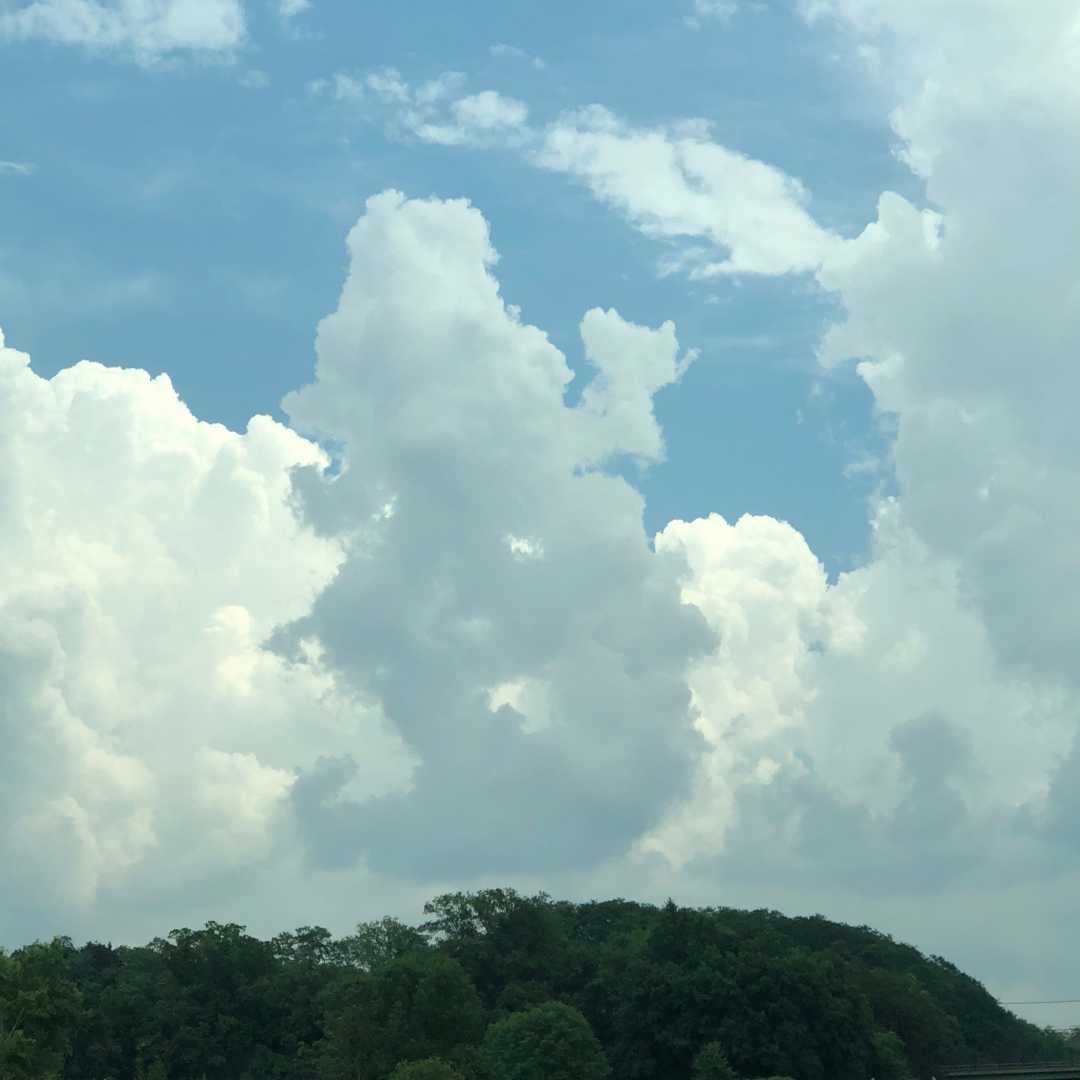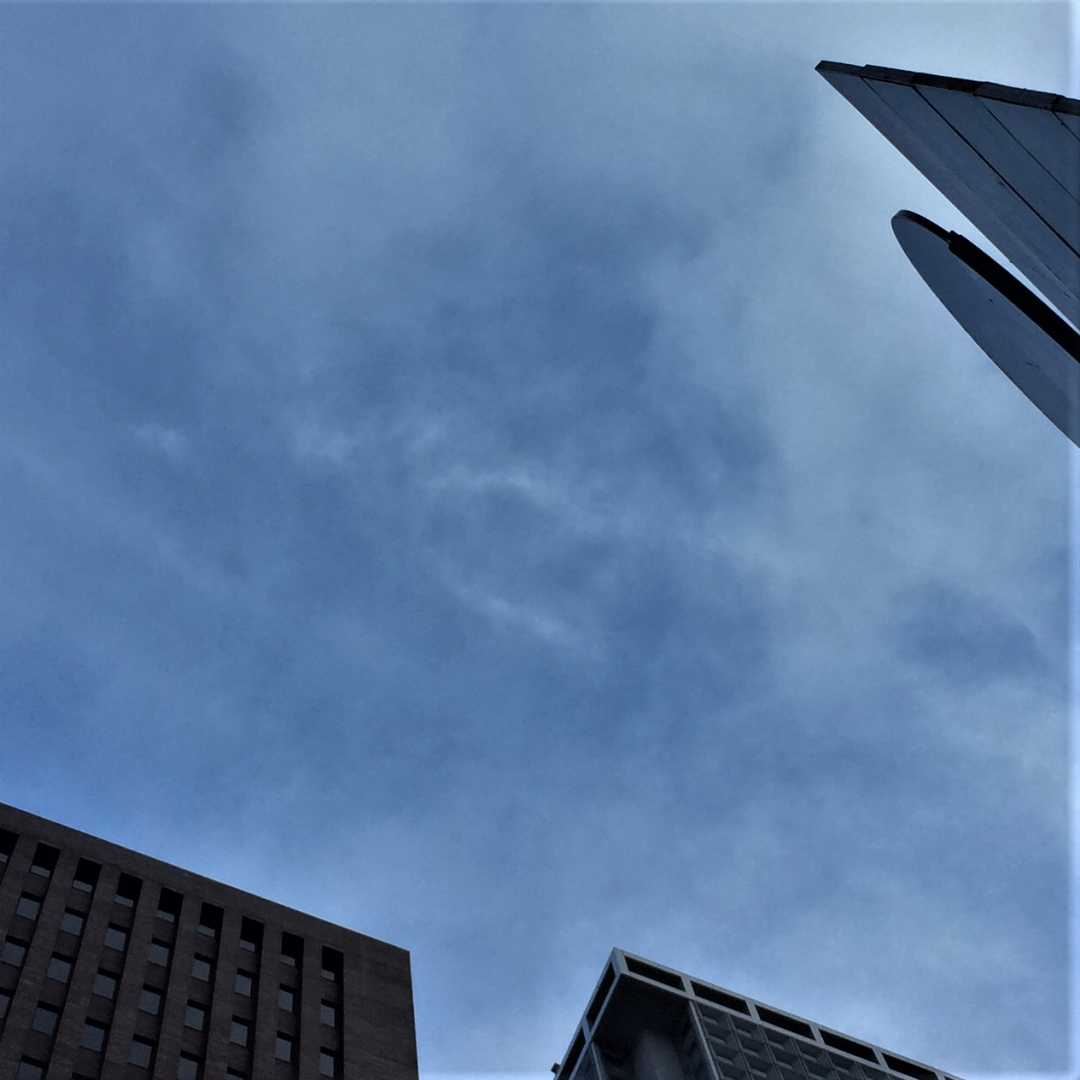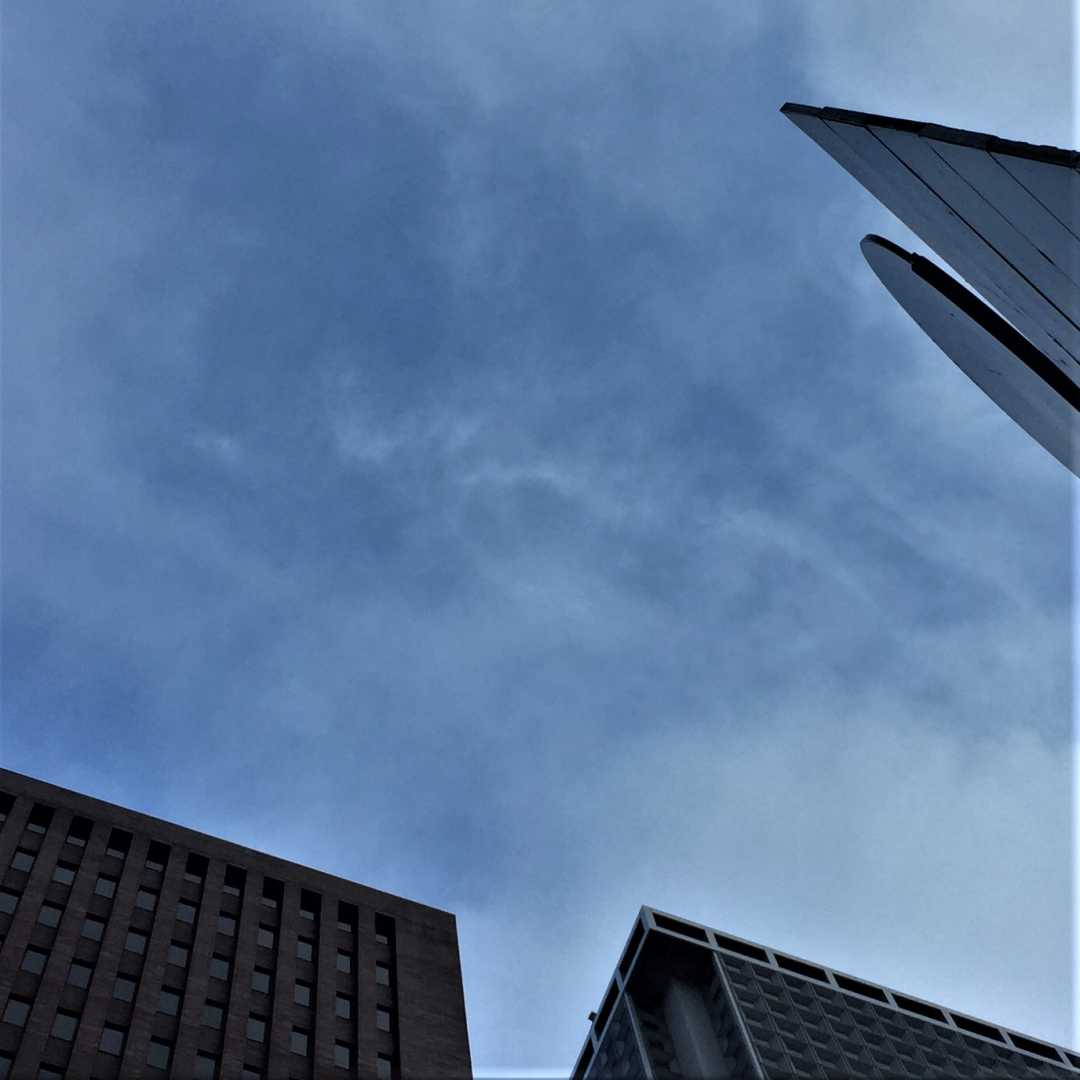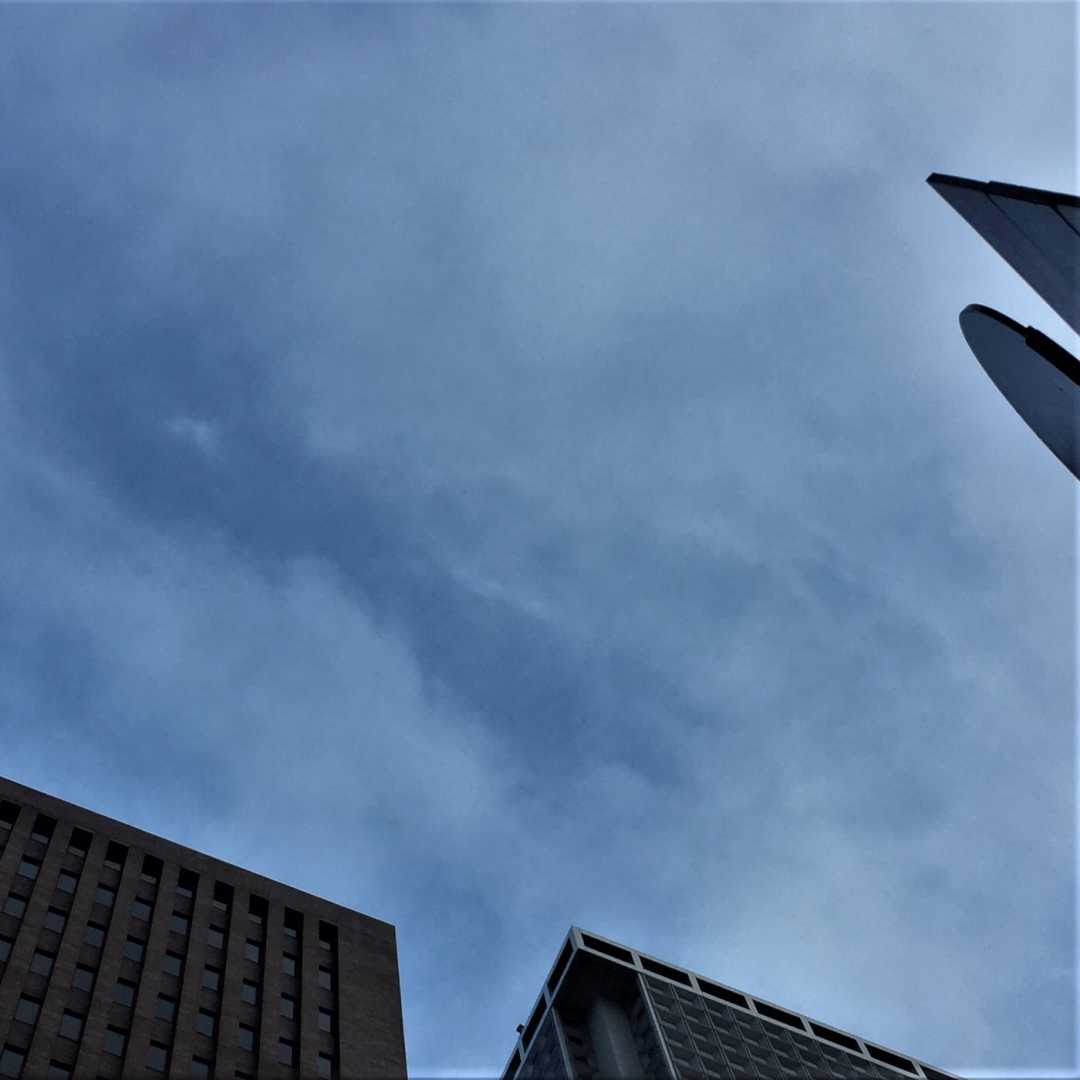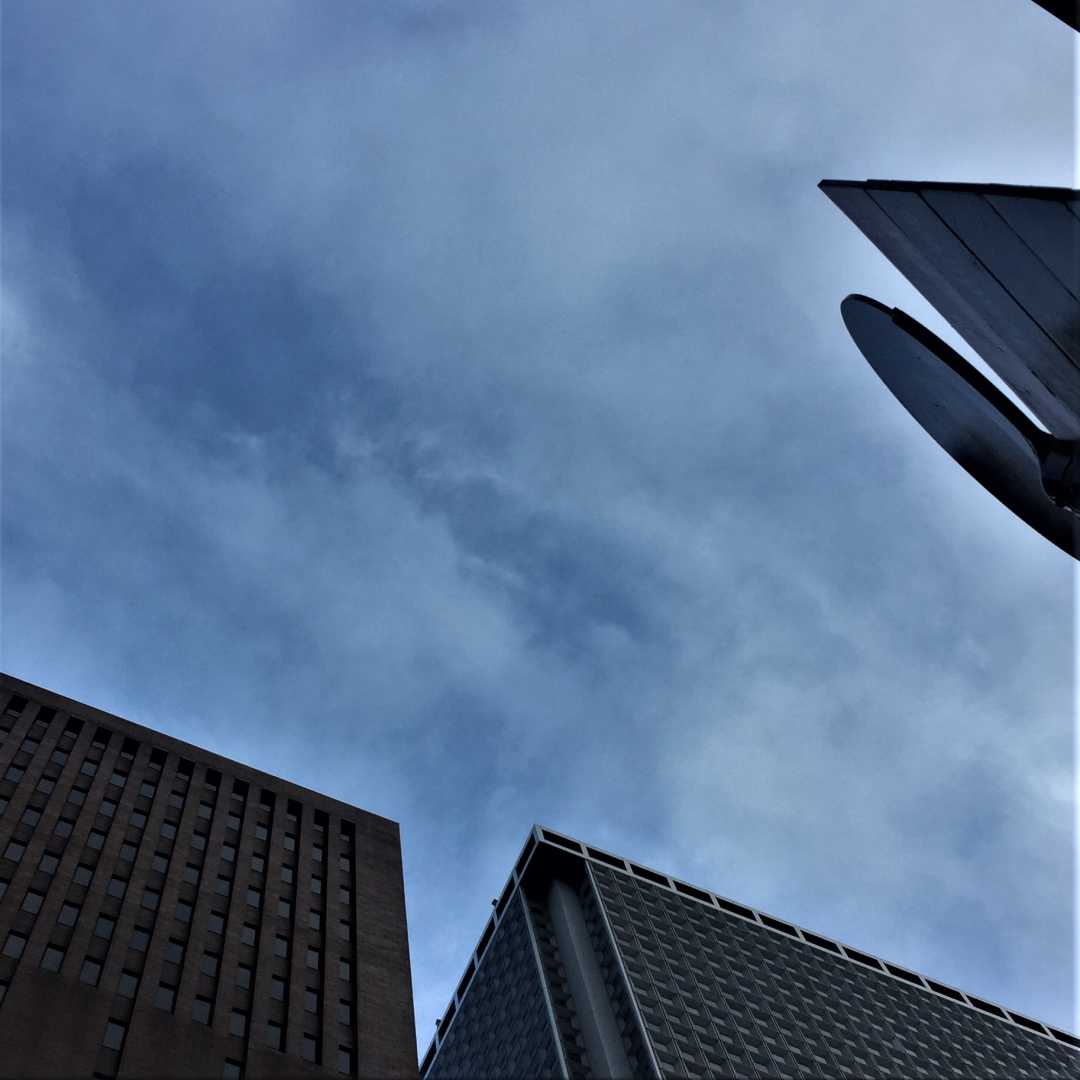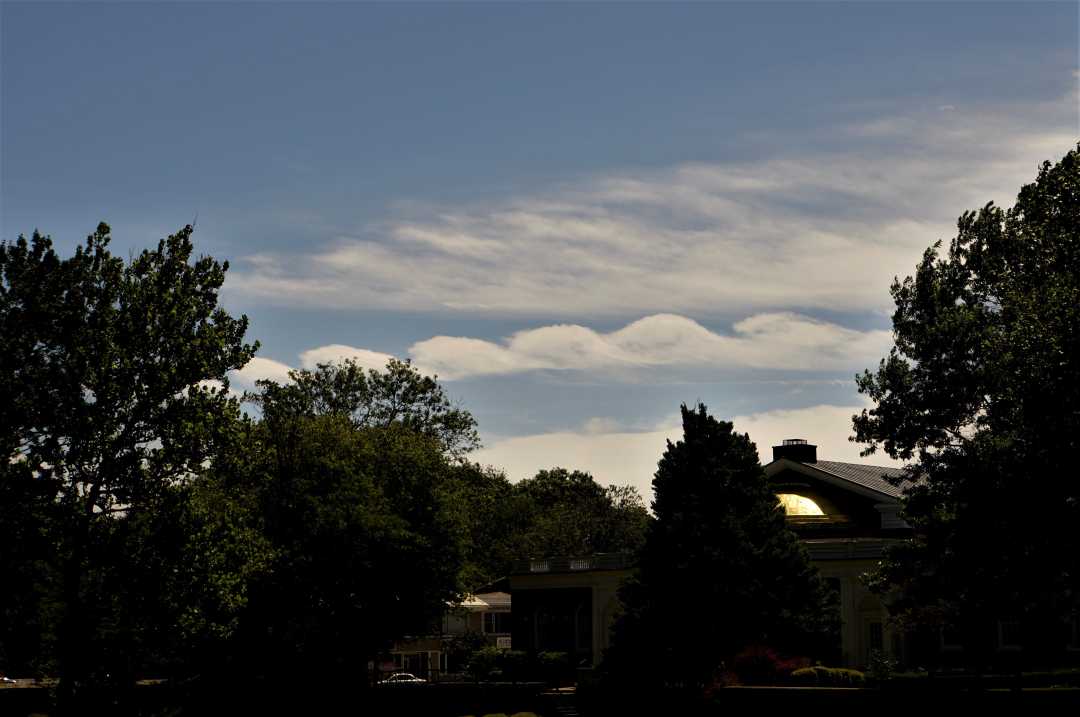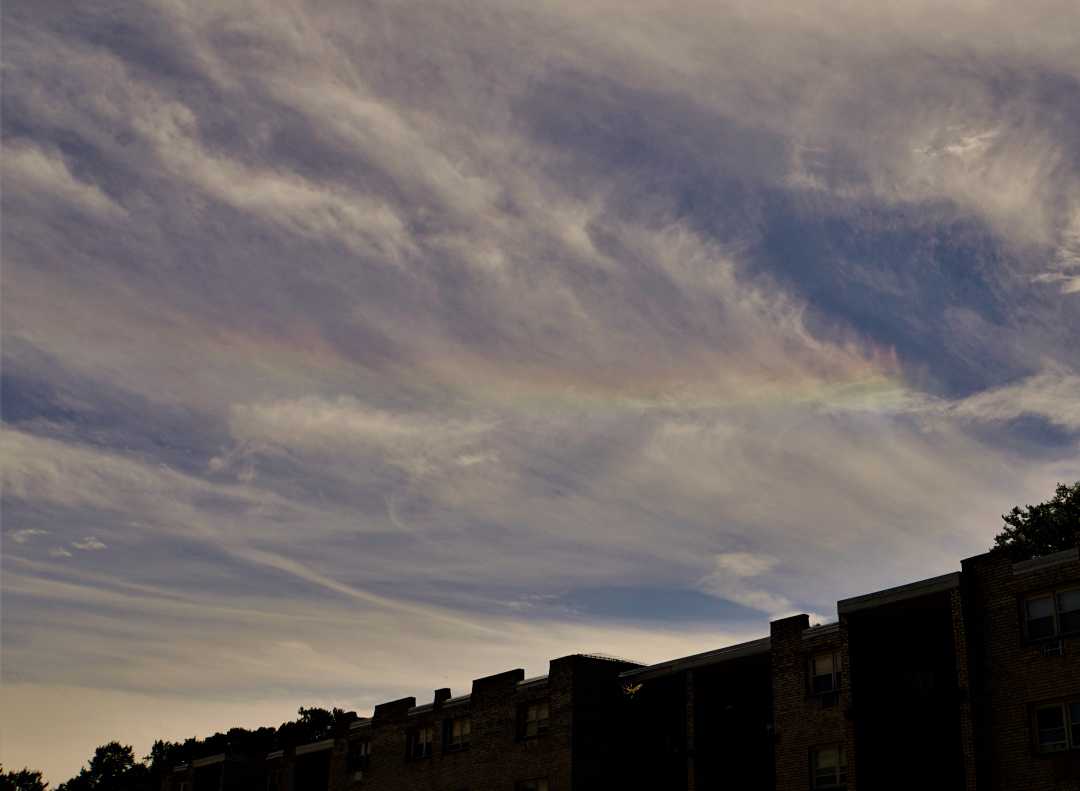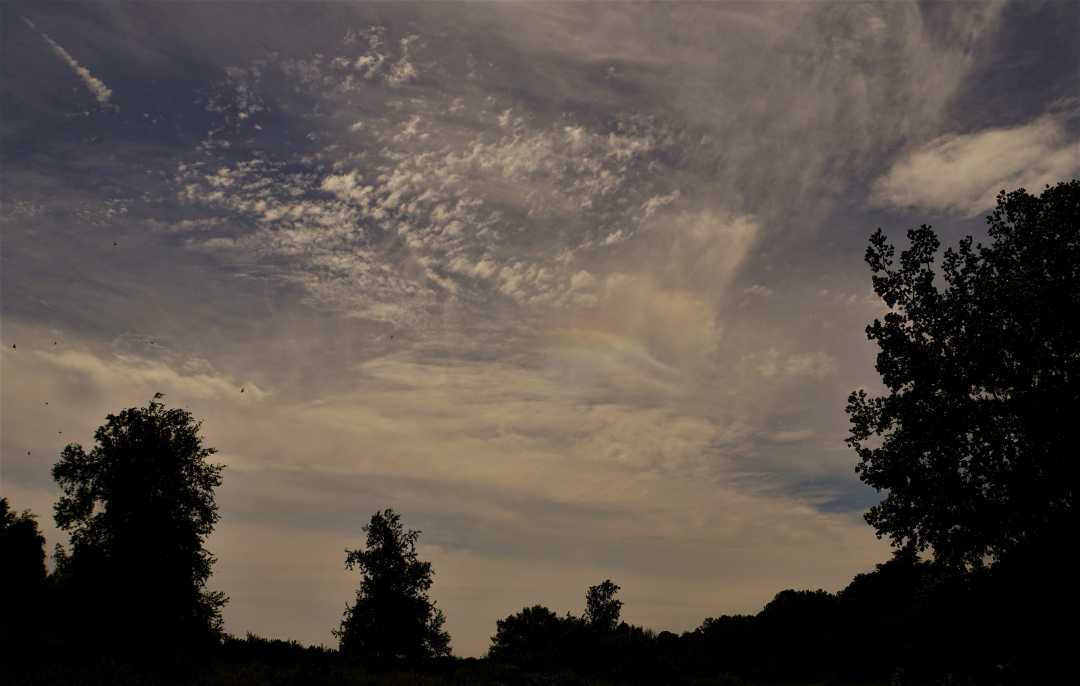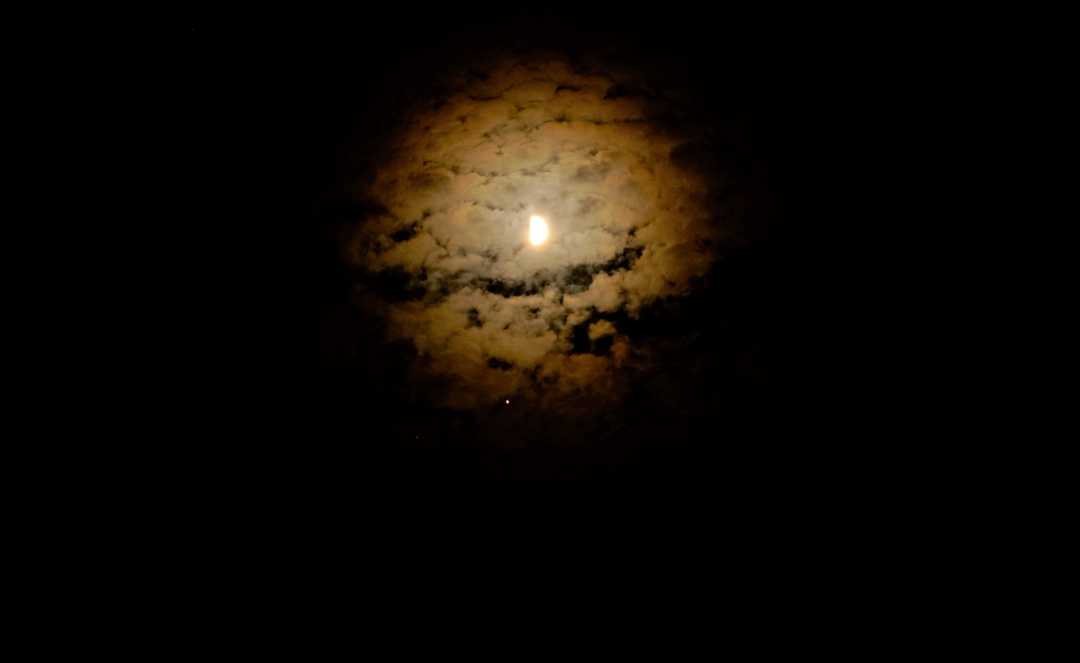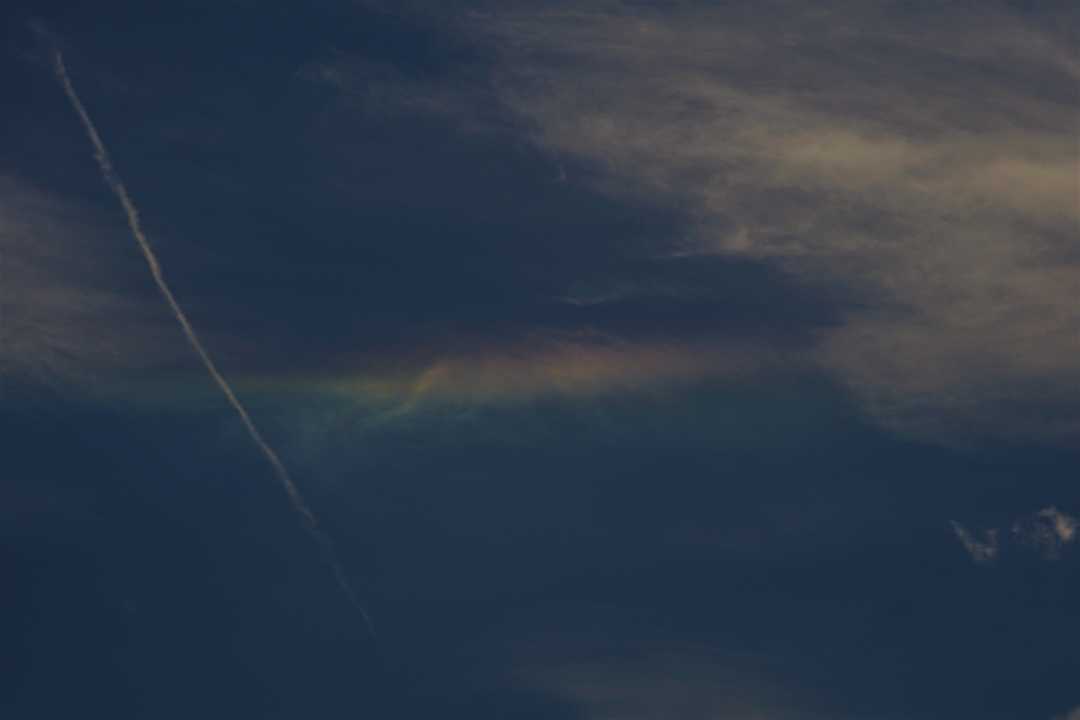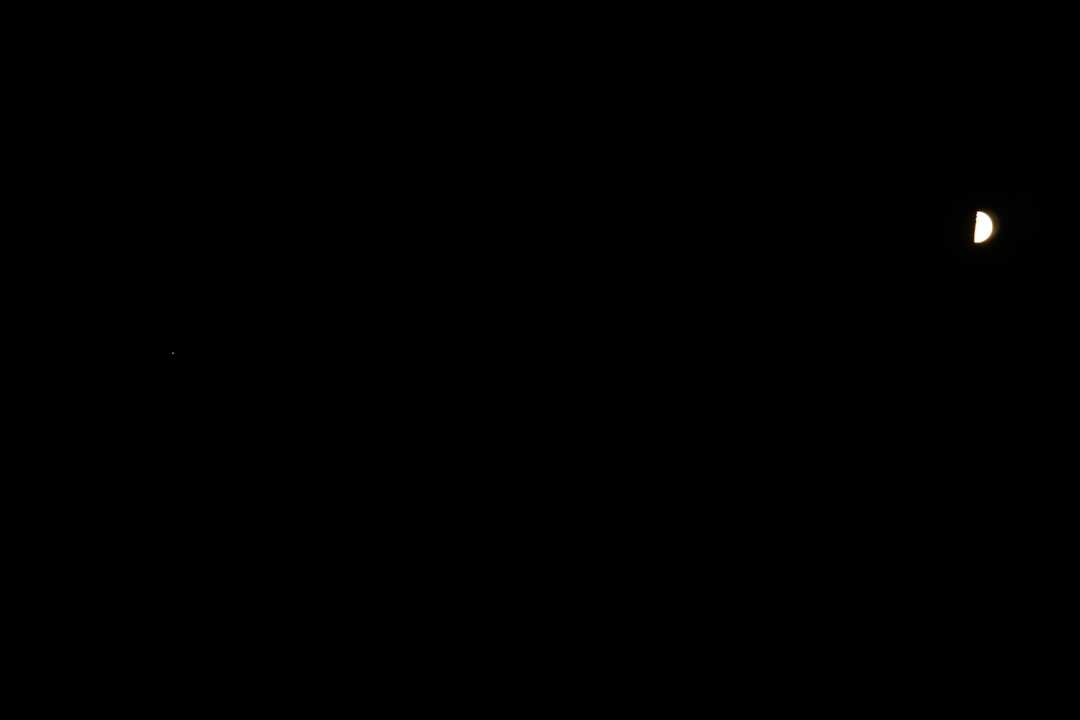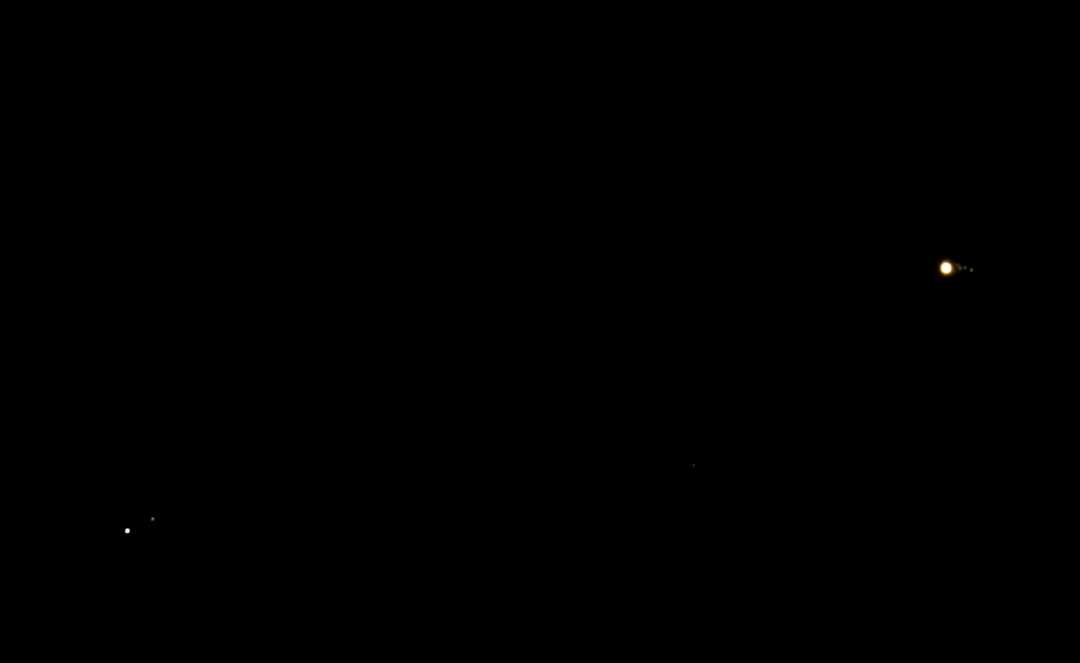Forum Replies Created
-
AuthorPosts
-
 George PreoteasaParticipant
George PreoteasaParticipantThanks for sharing this video, Laurence. Seem to be taken at high speed an played slow motion. Very interesting how lightning moves.
Lightning is fascinating but very scary. There is no protection from it in the outdoors. So unless you are very far or inside a house or car, you are exposed. In the west of the US, lighting storms can be visible from great distances, I guess, in the midwest too. It has to do, I think, with the drier air, but also with the relief, the wide flat land. In the east, where I am, not such luck.
 George PreoteasaParticipant
George PreoteasaParticipantGenie coming out of the woods.

 George PreoteasaParticipant
George PreoteasaParticipantHi Hans, sorry I missed your first posting. Here the contrail seems to be evolving into undulatus, maybe even k-h, though that’s a bit of a stretch. Another piece of the contrail puzzle.
I used to think of contrails as cloud pollution. Then as abstract art. Now I’m thinking of them as probes into the atmosphere.
Wanted to also say that I like the one with the plane. I like the contrast between the sharpness of the plane on the fuzzy background of the clouds. Did you play with the focus?
BTW, you are obviously using a serious telephoto, I think you said it does up to 400mm. Do you use a tripod for these shots?
 George PreoteasaParticipant
George PreoteasaParticipantHygge, in this country (or around New York City) a flat is most often a deflated tire. So the title of the piece must be referring to flat notes. You made me curious, I listened to to it. I hear a train whistle and the sound of a train passing at high speed. Musically, I suspect you need flat notes to simulate the Doppler effect. And I never heard anyone refer to Hoboken as hobo, so it must be about the homeless vagrants traveling by train. Maybe they are lying on their backs on flat cars watching the sky.
 George PreoteasaParticipant
George PreoteasaParticipantHmm … interesting but I think it’s a coincidence. Can you describe a bit its evolution? Did you see it form, how long did it last?
 George PreoteasaParticipant
George PreoteasaParticipantLooks like a different alphabet, Hans.
 George PreoteasaParticipant
George PreoteasaParticipantGreat idea, Ramona, I love to answer questions when I can, offer guesses otherwise, and ask my own questions. In fact, this is how I started posting to the forum. And even more coincidental, it was about a sort of lenticularis. I’ll include it at the end.
Regarding your questions, it’s true that the dark color in a cloud denotes higher water content. But it would not be the whole cloud, but rather the “belly”. So, agreeing with Hans, that dark cloud is really in the shadow on the big white one. It would probably look pretty bright white if it were not there.
Your other shots show a lenticularis, no doubt. I am not sure if it’s at the cirrus level of alto level. There is one indication, I think, which is the small undulatus fringes, which are rellay tiny, so that would indicate high altitude, thus cirrocumulus, again agreeing with Hans.
Now, your shot seems to also show other clouds and I seem to see some cumulonimbus features in them. There is similarity to that in the picture I posted. I think the disturbances created by cumulonimbus updrafts interferes with the horizontal air flow, just like a mountain or hill would, and this creates conditions for lenticularis clouds. Now, that’s just a guess.
Finally, I think BW can be really nice and useful in making features stand out, but did you try using a red filter? I recently bought one and it makes a difference. (I put the camera in BW mode too and increase the exposure. But you’re a photographer, if I remember, to whom am I giving advice :-)

 George PreoteasaParticipant
George PreoteasaParticipantThis topic has been idle for a while, I am happy to revive it. I think I observed one of these rare clouds. Observation conditions: the lowest cloud layer was stratocumulus with breaks, rolling fast. Between the breaks, I noticed something that looked like a horseshoe vortex, not moving much, obviously at a different level. All clouds were the same white, unfortunately, so the fractured stratocumulus are like noise in still shots. In motion, the individuality of the horseshoe appeared better. These shots are sequential at a few seconds interval.
Anyway, curious about people’s opinion whether this is true one.




 George PreoteasaParticipant
George PreoteasaParticipantFluctus? Not sure about it. Could be undulatus seen from a particular angle? What do others think?

 George PreoteasaParticipant
George PreoteasaParticipantHans, that moon shot is outstanding!
On this side, the CHA sightings continued yesterday, thanks to lots of high clouds as a large storm approached. I have to give you credit again for starting this. A couple of shots below, obviously enhanced. In the second one, the effect is not very strong, but I like the whole chaotic sky.


 George PreoteasaParticipant
George PreoteasaParticipantAnd combining astronomy and cloud/optical phenomena interest, here is a moon halo with Jupiter below and Zubengenubi a bit to the left of and below Jupiter, just barely visible.

 George PreoteasaParticipant
George PreoteasaParticipantHere is what I shot today, another CHA. Just a bit enhanced.

 George PreoteasaParticipant
George PreoteasaParticipantYou may be right, Hans.
 George PreoteasaParticipant
George PreoteasaParticipantAnd sure enough, there is Jupiter, tiny dot on the left. The moon is very bright, so I had to reduce sensitivity (ISO), which makes Jupiter look very dim, but it was quite bright.

Further, panning to the left, now Jupiter is on the right and Zubenelgenubi on the left. The telephoto is at its max (450 mm) and I notice some details. There is a little tail near Jupiter, they are its moons. And you can see Zubenelgenubi is actually double star. I did not think i could see all that with my equipment.

And while taking these pictures and verifying with the Sky Guide app, a bonus: the ISS comes into the pictures and quicky moves on. That I captured in a hurry with my old iPhone, it was quite bright.
 George PreoteasaParticipant
George PreoteasaParticipantYes, that’s said. Still I can see planets on clear nights when the air is clear, polar air from Canada. Like tonight, when I hope to see Jupiter. And that’s in Queens, one of the New York City boroughs.
-
AuthorPosts


